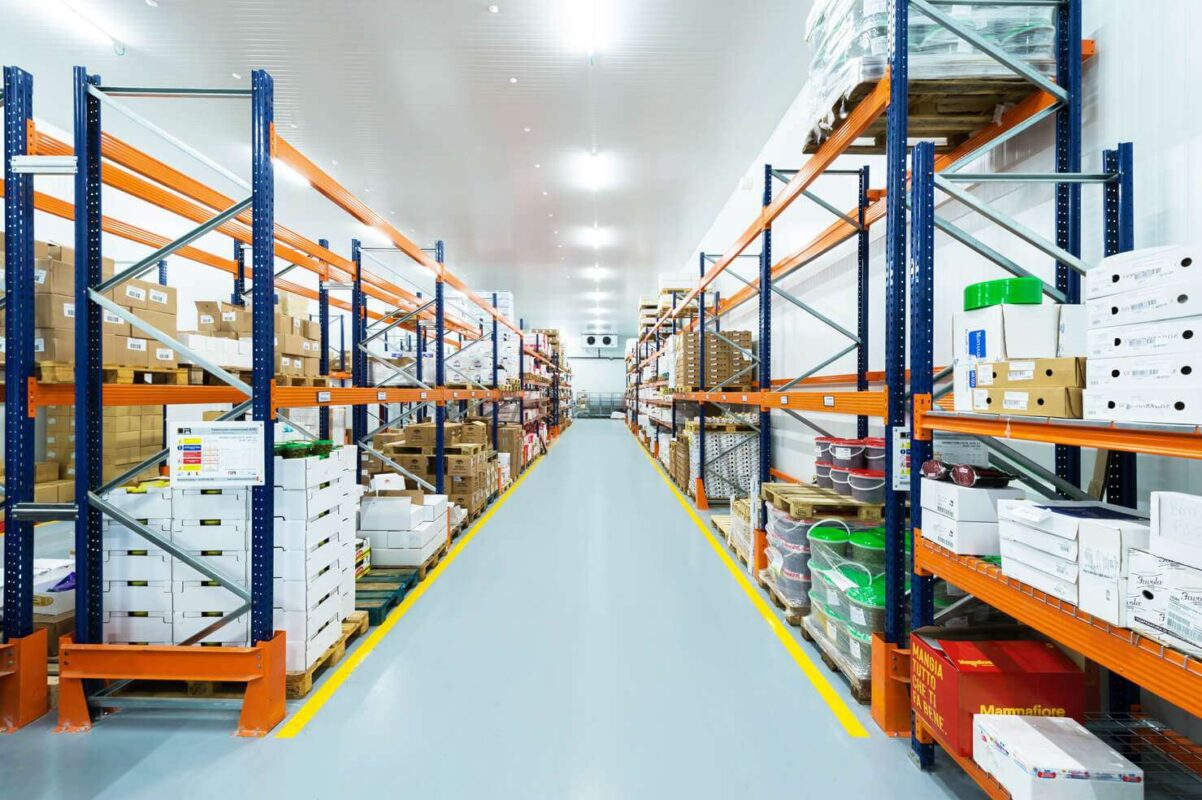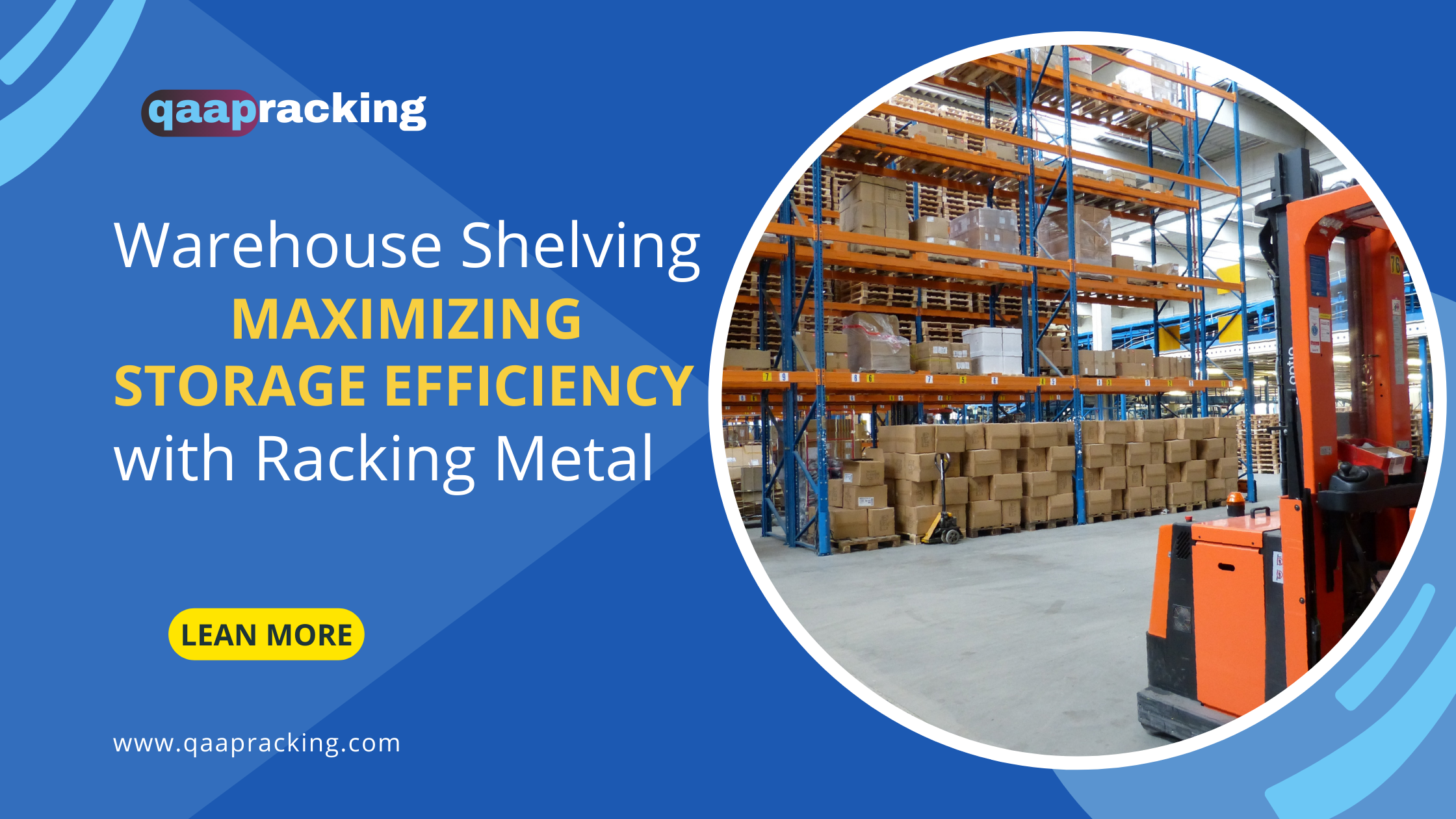Warehouse shelving is a crucial aspect of any business that requires storage of products, materials, or equipment. Choosing the right type of warehouse shelving can make a significant difference in maximizing space, improving efficiency, and ensuring the safety of employees. One popular option for warehouse shelving is racking metal, which offers durability, versatility, and customizable options.
1. Types of Racking Metal
There are various types of racking metal that can be used for warehouse shelving. Some of the most common types include:

Boltless Shelving
Boltless shelving is an easy-to-assemble option that requires no nuts, bolts, or tools for installation. It is typically made from steel or aluminum and can be adjusted to fit various heights and widths.
Pallet Racking
Pallet racking is a popular option for storing large quantities of palletized materials. It typically features upright frames and cross beams that can be adjusted to fit different pallet sizes.
Cantilever Racking
Cantilever racking is ideal for storing long or bulky items such as pipes, lumber, or furniture. It typically features upright columns and cantilevered arms that allow for easy access to stored items.
Wire Shelving
Wire shelving is a lightweight and easy-to-clean option that is ideal for storing items that require air circulation, such as food or medical supplies. It typically features adjustable shelves and can be customized to fit various widths and depths.
2. Factors to Consider When Choosing Racking Metal
When choosing racking metal for your warehouse shelving, there are several factors to consider. These include:
Available Space
One of the most important factors to consider is the available space for your shelving. You’ll want to choose shelving that fits within your warehouse’s available space while still allowing for adequate aisle space and access to stored items.
Weight Capacity
Another important factor to consider is the weight capacity of your shelving. You’ll want to choose shelving that can safely support the weight of your stored items, without risking collapse or damage.
Accessibility
Accessibility is another important consideration when choosing warehouse shelving. You’ll want to choose shelving that allows for easy access to stored items. This may mean choosing shelving with adjustable shelves or opting for mobile shelving to eliminate wasted aisle space.
Durability
Durability is also a key factor to consider. You’ll want to choose shelving that is built to last and can withstand the wear and tear of daily use. This may mean opting for heavier-duty shelving or choosing shelving made from materials such as steel or aluminum.
Cost
Cost is another important consideration when choosing warehouse shelving. While it may be tempting to opt for the cheapest option available, it’s important to consider the long-term costs of your shelving. Cheaper shelving may not be as durable or may not have as high weight capacities as more expensive options, meaning you may need to replace it sooner.
Customization Options
Finally, you’ll want to consider the customization options available for your shelving. Many types of shelving offer adjustable shelves or other customization options that allow you to tailor the shelving to your specific needs.
3. Installation and Maintenance
Once you’ve chosen the right type of warehouse shelving for your business, it’s important to ensure proper installation and maintenance to keep your shelving in good condition.
Installing Warehouse Shelving
Proper installation is crucial for the safety and stability of your shelving. Make sure to follow all manufacturer instructions carefully when installing your shelving, and ensure that it is securely anchored to the floor or wall.
Maintaining Warehouse Shelving
Regular maintenance is also important for keeping your warehouse
shelving in good condition. This may include regular inspections to check for any signs of wear or damage, as well as cleaning and organizing the shelving to ensure it is being used to its full potential.
4. Benefits of Racking Metal
Choosing racking metal for your warehouse shelving can offer several benefits, including:
Durability
Racking metal is built to last and can withstand heavy loads, making it a durable option for warehouse shelving.
Customization
Racking metal can be customized to fit your specific needs, with options for adjustable shelves, different widths and heights, and other customization options.
Space-saving
Racking metal is designed to maximize storage efficiency, allowing you to store more items in less space.
Improved organization
Proper warehouse shelving can improve organization, making it easier to find and access stored items.
Safety
Racking metal is designed to safely and securely hold heavy loads, reducing the risk of accidents or injuries in the workplace.
5. Conclusion
Warehouse shelving is an essential component of any business that requires storage space. Choosing the right type of shelving can help maximize storage efficiency, improve organization, and ensure the safety of employees. Racking metal is a popular option for warehouse shelving, offering durability, customization options, and space-saving benefits. By considering factors such as available space, weight capacity, accessibility, durability, cost, and customization options, you can choose the right type of racking metal for your business and ensure proper installation and maintenance to keep your warehouse shelving in good condition.
FAQs
What is racking metal?
Racking metal is a type of warehouse shelving that is made from durable metal materials and is designed to hold heavy loads.
What are the benefits of racking metal?
Racking metal offers several benefits, including durability, customization options, space-saving benefits, improved organization, and safety.
What factors should I consider when choosing racking metal for my warehouse shelving?
When choosing racking metal, it’s important to consider factors such as available space, weight capacity, accessibility, durability, cost, and customization options.
How do I install racking metal for my warehouse shelving?
Proper installation is crucial for the safety and stability of your shelving. Make sure to follow all manufacturer instructions carefully when installing your shelving, and ensure that it is securely anchored to the floor or wall.
How do I maintain my racking metal warehouse shelving?
Regular maintenance is important for keeping your warehouse shelving in good condition. This may include regular inspections to check for any signs of wear or damage, as well as cleaning and organizing the shelving to ensure it is being used to its full potential.

